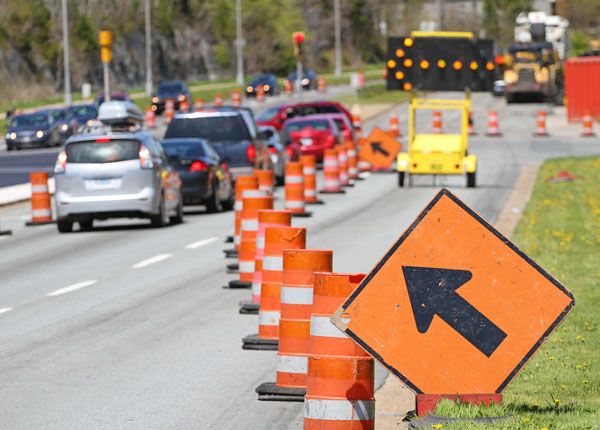
Work Zone Driving Rules: Road Signs, Channeling Devices & Flagger Signals
Updated Dec. 11, 2020Drivers moving through a roadway work zone will come across unexpected signs, signals and traffic control measures. In complex work zones that incorporate diversions, multiple lanes of traffic and various traffic control devices, interpreting the instructions they provide can be a little overwhelming.
Fortunately, traffic control devices around work zones are designed to be easily understood. In this module, the signs and signaling devices you are likely to encounter around work zones are explained.
Regulatory signs
Regulatory signs tell you the “rules” governing the work zone area. Speed limit signs are the most common type of regulatory sign used around construction and maintenance zones. In most cases, the speed limit will be considerably lower than it would usually be on that stretch of road. Remember – you could be subject to a doubled fine if you are caught breaking the speed limit.
Guiding & channeling devices
These inactive devices include drums, cones, barriers and tubular markers. They are usually vibrantly colored and fitted with reflectors or lights, to be easily seen by motorists. Guiding and channeling devices are used to direct vehicles away from hazards or closed stretches of road or to funnel them safely through a work area.
Arrow panels
These typically rectangular panels are often used around work sites to direct motorists toward or away from a particular lane. When driving through a work zone at night, you will likely encounter electronic flashing arrow panels indicating lane closures and detours.
Flagger signals
Traffic control personnel – often known as flaggers or flagmen – may be positioned around a work zone to manage the flow of traffic through the site. Using colored flags and paddles, flaggers direct traffic into lanes and indicate when motorists must stop, slow down or proceed. Some work zones also have electronic signs to support flaggers who are managing traffic.
Drivers must come to a complete stop if a flagger displays an orange or red flag, horizontally across a lane of traffic. The flagger will then indicate when you may resume your course through the work zone.
Flagger signal paddles are typically marked with “SLOW” or “STOP” traffic control messages. Keep your eyes on the flagger and be ready to proceed slowly or stop, based on what their signal paddle indicates.
Obeying work zone traffic control devices
The increased risk around work zones means that obeying the signs, signals and traffic control devices established in these areas is every bit as important as obeying them elsewhere – perhaps even more so. Be vigilant and proceed calmly when navigating a work zone. Your ability to acknowledge and abide by all work zone traffic control devices depends on staying alert and keeping your speed to a minimum.




